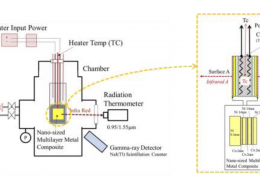International Partnerships and Policies
The Office of Science and Technology at the US executive branch recently released a policy statement, International Partnerships in a New Era of Fusion Energy Development. This important document offers insights into the current state and future of fusion research funding. Furthermore, it reflects President Biden’s commitment to market forces and technological innovation for clean energy, including fusion energy, underscoring the United States’ dedication to environmental stewardship and technological progress.
Overcoming Fusion Technology Challenges
Despite the prevailing optimism in the sector, the fusion energy field faces significant challenges. The US Government Accountability Office’s March 2023 report, Technical Assessment of Fusion Energy, emphasizes the hurdles in hot and plasma fusion. Specifically, it sheds light on understanding dynamic plasmas, developing durable materials for fusion conditions, and solving complex engineering problems.
The Rise of Solid State Fusion
In contrast to hot plasma fusion, solid-state fusion, often overlooked in mainstream discussions, represents a significant shift. Characterized by small-scale, table-top devices, this technology catalyzes hydrogen in metals like nickel, copper, titanium, palladium, etc. offering a cleaner, safer, and more sustainable energy alternative to carbon based fuels. Additionally, this approach holds the potential to revolutionize how we think about energy generation from an abundantly dense energetic medium such as hydrogen. However, it may be that socioeconomic and safety standards need to be addressed before more innovation in Fusion energy can reach the public sector?
Contextualizing Solid State Fusion at COP28
The primary discussion around Fusion Power was done by International Atomic Energy Agency (IAEA). Sever initiatives where laid out and the fusion conversation certainly wasn’t absent from COP28.
The limited dialogue of Solid State Fusion at COP28, despite its relevance, may stem from several factors. These include the current focus of mainstream research, the challenges in condensed matter nuclear science, and the historical development of the field. Delving into these nuances is crucial for a comprehensive understanding.
–Mainstream Research Focus: Hot and Plasma Fusion
Most global attention and funding in fusion research have been directed toward hot fusion and plasma fusion technologies. High-profile projects like ITER and the National Ignition Facility have been at the forefront due to their focus on high-temperature plasmas and their perceived feasibility.
–Challenges in Condensed Matter Nuclear Science
Solid State Fusion, often associated with Low Energy Nuclear Reactions (LENR), has encountered skepticism due to challenges in replicating results and theoretical uncertainties. The field, complex and not fully understood, can be explored further through resources like condensed matter nuclear science studies.
–Historical Context and Skepticism
The history of Solid State Fusion, especially the controversy surrounding “cold fusion” in the late 1980s, has contributed to ongoing skepticism. Despite this, recent advancements in LENR and other areas of condensed matter nuclear physics are changing perceptions and encouraging renewed interest with a litany of verifiable empirical experiments.
The Need for More Discussion

Given its potential as a clean, safe, and sustainable energy source, Solid State Fusion warrants more research and discourse. Experimentation with hydrogen in condensed matter nuclear science could lead to groundbreaking energy generation methods, but this necessitates a shift in research priorities and public perception.
Regulatory Frameworks: Paving the Way
With the rapid development of solid-state fusion technology, updated regulatory frameworks are essential. The GAO policy statement outlines important steps toward creating a secure environment for fusion energy, including international coordination on regulatory frameworks and fostering public-private partnerships. Understanding global fusion energy regulations is crucial for progress.
Conclusion: A Future Powered by Fusion?

Standing at the threshold of a new era, COP28 has set the stage for a transformative journey in fusion energy. This discussion, bolstered by international collaboration and innovative policies, hold the potential to revolutionize how we harness clean energy. In essence, marking a significant technological leap towards a sustainable and energy-secure future. This may require a change in understanding fundamental physics, and in particular, the physics of what is collectively valuable to the human species?
“Science is a beautiful gift to humanity, we should not distort it.”
-Abdul Kalam
Additional Resources
Explore further about fusion energy and COP28 developments:
- COP28 Official Website
- International Partnerships in a New Era of Fusion Energy Development
- Technical Assessment of Fusion Energy
- LENR Library of Evidence
- More LENR-News
- Join the discussion at LENR-Forum









